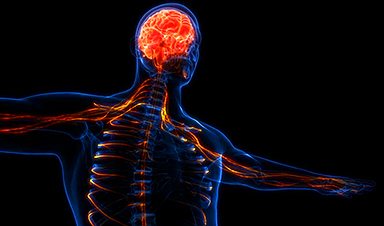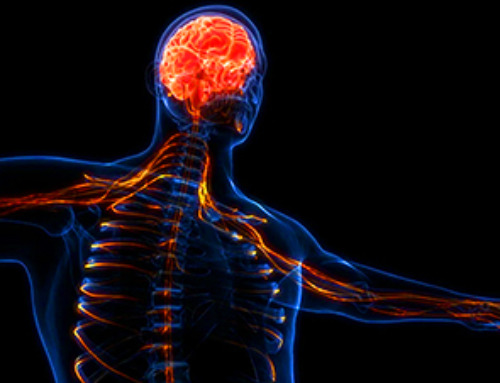Key Points
-
Monash researchers have developed a method to prepare elongated nanocrystals to deliver therapeutic drugs
-
Elongated nanocrystals can carry a high payload of drugs to potentially increase drug targetability and also decrease dosage frequency and side effects
- The researchers used a combination of deuteration, X-ray and neutron techniques at ANSTO to distinguish the three layers of the nanocrystal
Monash University researchers have used advanced techniques at ANSTO to investigate the production of new, elongated polymer nanocapsules with a high payload of drug nanocrystals to potentially increase drug targetability, and also decrease dosage frequency and side effects.
This method had not been investigated previously and represents a pioneering method of investigation in the field of colloidal science applications for drug delivery.
Nanoparticles have been used to increase the delivery efficiency of cancer therapy because of their biocompatibility, versatility and the easiness of functionalisation.
The team engineered novel elongated polymer nanocapsules, which are unlike the more well-known spherical nanocapsules.
The elongated polymer nanocapsules were made with elongated liposomes or surfactant vesicles and used drug nanocrystals as a template.
The results provided strong evidence that the elongated structure could be retained, and also confirmed that the loading method to form rod-like drug nanocrystals inside liposomes was a practical solution.
The combination of the high drug payload, in the form of encapsulated nanocrystals, and the non-spherical feature of liposomes represented a more efficient delivery system.
Spherical hollow nanocapsules have been studied extensively, but the formation of elongated nanocapsules containing active pharmaceuticals as therapeutic agents has been previously largely unsuccessful.
“There are difficulties in retaining the elongated shape and their encapsulation efficiency is low,” explained researcher Yunxin (Cindy) Xiao, a PhD candidate working in the Nonlaminar group with Prof Ben Boyd at the Monash Biomedicine Discovery Institute. and the recipient of the Australian Institute of Nuclear Science and Engineering Post Graduate Research Award.
“The elongated shape is better because it is more difficult for immune cells to internalise them and because their therapeutic efficiency at the target site can be maximised.”
After obtaining promising structural results using a liposomal template investigated using the small angle X-ray scattering beamline at ANSTO’s Australian Synchrotron and the small and ultra-small small-angle neutron scattering instruments Bilby and Kookaburra in previous research, the template was used to form elongated polymer nanocapsules.
The researchers used vesicles made of surfactants as templates, which allowed for the polymerisation of a less permeable shell inside these….
News
Nerve Damage Can Disrupt Immunity Across the Entire Body
A single nerve injury can quietly reshape the immune system across the entire body. Preclinical research from McGill University suggests that nerve injuries may lead to long-lasting changes in the immune system, and these [...]
Fake Science Is Growing Faster Than Legitimate Research, New Study Warns
New research reveals organized networks linking paper mills, intermediaries, and compromised academic journals Organized scientific fraud is becoming increasingly common, ranging from fabricated research to the buying and selling of authorship and citations, according [...]
Scientists Unlock a New Way to Hear the Brain’s Hidden Language
Scientists can finally hear the brain’s quietest messages—unlocking the hidden code behind how neurons think, decide, and remember. Scientists have created a new protein that can capture the incoming chemical signals received by brain [...]
Does being infected or vaccinated first influence COVID-19 immunity?
A new study analyzing the immune response to COVID-19 in a Catalan cohort of health workers sheds light on an important question: does it matter whether a person was first infected or first vaccinated? [...]
We May Never Know if AI Is Conscious, Says Cambridge Philosopher
As claims about conscious AI grow louder, a Cambridge philosopher argues that we lack the evidence to know whether machines can truly be conscious, let alone morally significant. A philosopher at the University of [...]
AI Helped Scientists Stop a Virus With One Tiny Change
Using AI, researchers identified one tiny molecular interaction that viruses need to infect cells. Disrupting it stopped the virus before infection could begin. Washington State University scientists have uncovered a method to interfere with a key [...]
Deadly Hospital Fungus May Finally Have a Weakness
A deadly, drug-resistant hospital fungus may finally have a weakness—and scientists think they’ve found it. Researchers have identified a genetic process that could open the door to new treatments for a dangerous fungal infection [...]
Fever-Proof Bird Flu Variant Could Fuel the Next Pandemic
Bird flu viruses present a significant risk to humans because they can continue replicating at temperatures higher than a typical fever. Fever is one of the body’s main tools for slowing or stopping viral [...]
What could the future of nanoscience look like?
Society has a lot to thank for nanoscience. From improved health monitoring to reducing the size of electronics, scientists’ ability to delve deeper and better understand chemistry at the nanoscale has opened up numerous [...]
Scientists Melt Cancer’s Hidden “Power Hubs” and Stop Tumor Growth
Researchers discovered that in a rare kidney cancer, RNA builds droplet-like hubs that act as growth control centers inside tumor cells. By engineering a molecular switch to dissolve these hubs, they were able to halt cancer [...]
Platelet-inspired nanoparticles could improve treatment of inflammatory diseases
Scientists have developed platelet-inspired nanoparticles that deliver anti-inflammatory drugs directly to brain-computer interface implants, doubling their effectiveness. Scientists have found a way to improve the performance of brain-computer interface (BCI) electrodes by delivering anti-inflammatory drugs directly [...]
After 150 years, a new chapter in cancer therapy is finally beginning
For decades, researchers have been looking for ways to destroy cancer cells in a targeted manner without further weakening the body. But for many patients whose immune system is severely impaired by chemotherapy or radiation, [...]
Older chemical libraries show promise for fighting resistant strains of COVID-19 virus
SARS‑CoV‑2, the virus that causes COVID-19, continues to mutate, with some newer strains becoming less responsive to current antiviral treatments like Paxlovid. Now, University of California San Diego scientists and an international team of [...]
Lower doses of immunotherapy for skin cancer give better results, study suggests
According to a new study, lower doses of approved immunotherapy for malignant melanoma can give better results against tumors, while reducing side effects. This is reported by researchers at Karolinska Institutet in the Journal of the National [...]
Researchers highlight five pathways through which microplastics can harm the brain
Microplastics could be fueling neurodegenerative diseases like Alzheimer's and Parkinson's, with a new study highlighting five ways microplastics can trigger inflammation and damage in the brain. More than 57 million people live with dementia, [...]
Tiny Metal Nanodots Obliterate Cancer Cells While Largely Sparing Healthy Tissue
Scientists have developed tiny metal-oxide particles that push cancer cells past their stress limits while sparing healthy tissue. An international team led by RMIT University has developed tiny particles called nanodots, crafted from a metallic compound, [...]





















